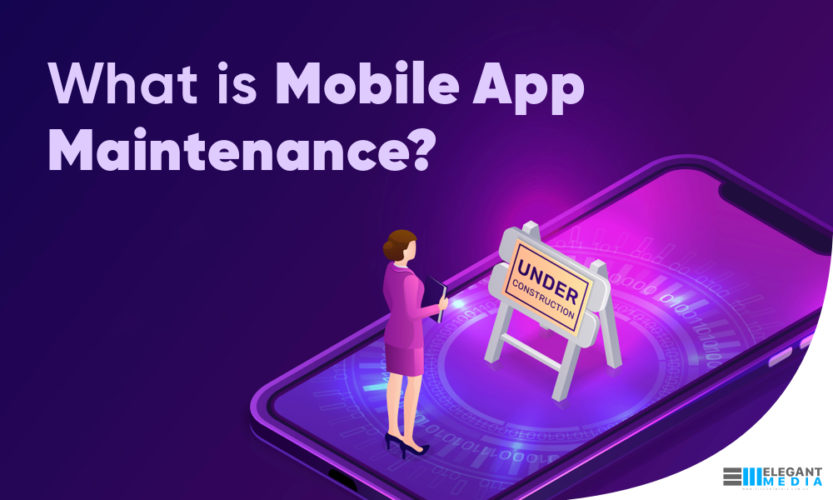There are many reasons why one would need to update their mobile App including updates of their company’s website or simply improving the user interface. Mobile App maintenance will vary depending on the type of company involved with it and what they plan on doing with their update.
Let’s define mobile App maintenance as: periodic and normal updates and/or fixes to the App that provide new functionality and/or addresses any outstanding bugs. The mobile device software itself has become a necessity to most people’s day-to-day lives.
It has become vital for business owners to update their mobile Apps to ensure that everything remains up and running. If the mobile App is not updated regularly over time, chances are it will malfunction or get out of date. According to a report by Statista, the retention rate across various Apps vary. The average retention rate across 31 categories was 25.3%. Worryingly for marketers though, by day 30, this percentage drops to just 5.7%.
This is why you need to ensure you have great App design when creating Apps so that they stick with the target consumer. To put all of this into perspective, in 2016, Apple removed a whopping 50,000 apps from its App Store.
Most companies want their mobile Apps to be updated on a monthly basis for testing purposes. They may also want them updated more frequently depending on what they plan on doing with them.
5 Aspects Matter
There are a few aspects that need to be considered when looking at mobile App maintenance. They are as follows:
- Server Management
- Infrastructure & Scalability
- Performance Optimisation
- Technology Integration Management
- Marketing Performance
Let’s look into each aspect separately.
1. Server Management
The Components of Server Management
Server management is the process of keeping and optimising servers and their databases. It’s a systematic approach that includes:
- Planning,
- Acquiring,
- Configuring,
- Deploying, and
- Overseeing the technical support of server systems.
There are many things to take into consideration when creating a server App; these range from hardware requirements to software complexity to introduction of new products.
Maintaining an App requires careful planning as servers demand different levels of security at their own rates. For example, one server could be using an older version while another is updated regularly with the latest upgrades.
One thing that is a concerningly common issue is memory usage causing crashes for Apps running on servers with limited RAM resources.
It is necessary to have a clear idea of what the App is, what its purpose is and how it will be used. If this is not done, then the App could fail from being too complicated for its users. After listing down what the App must contain, it’s important to have a technical view of all these features so that you will know how they map out.
2. Infrastructure & Scalability
Scaling Apps is a science
From the moment you have decided to create an App, you need to ensure that it can handle a great number of users.
From a geek’s point of view, what this means is that it needs to take into consideration the following:
- Star-class security
- Fast loading
- Zero crashes
- No downtime
So, I’ll reiterate what I said earlier: you need to think about scalability before even writing the code. There are a few things that you must consider here, like choosing the ideal programming language and having the right tech stack.
Part and parcel of choosing the right programming language should be the use of Flutter, which we are competent and knowledgeable about.
3. Performance Optimisation
Performance optimisation includes these factors
When it comes to App performance, you may find yourself struggling with sluggish pages or features that don’t work properly.
Poor connection speeds cause your App to struggle with high traffic, which could be caused by server load or other resources being overworked. What you need to consider is the following:
- Image loading
- Network performance
- Mobile wait times
- App stability
The essential way to navigate performance optimisation is by ensuring that you optimise the App for older devices, take into account new technologies, and test the App rigorously by using tools like Firebase.
4. Technology Integration Management
Technology integration management will use these technologies
Mobile App maintenance is a continuous WIP effort, and it is important to keep making the App you have created better. Technology integration management will include the following:
- New technology integration
- Code modifications, and
- Upgrading Platforms
The aspect of technology integration management will also include basic but significant things like ironing out bugs, adding more code, features, and checking security.
5. Marketing Performance
Tracking these KPIs will make your App successful
The aspect of marketing performance is a large aspect that is contained with the domain of mobile App maintenance. There are various factors that need to be considered, like:
- Upgrading UI/UX
- Minimise uninstalls
- Secure payment gateways
- Add new features
This is where the whole concept of App analytics comes to the fore. Here are some excellent tools that you should consider. As mentioned earlier, Apps are a WIP project, and is an extension of your business. You need to keep up with current and future trends to ensure that it is efficient and effective.
Mobile App Maintenance is an ongoing process
Mobile App maintenance is an ongoing process. While some aspects of the process are relatively easy to maintain, others can be incredibly complex. All of this means you should approach it with an understanding of the necessary effort and time required for success. Not to mention, you’ll have to weigh the cost vs. the benefits on a regular basis in order to ensure it’s worth your while long-term.






